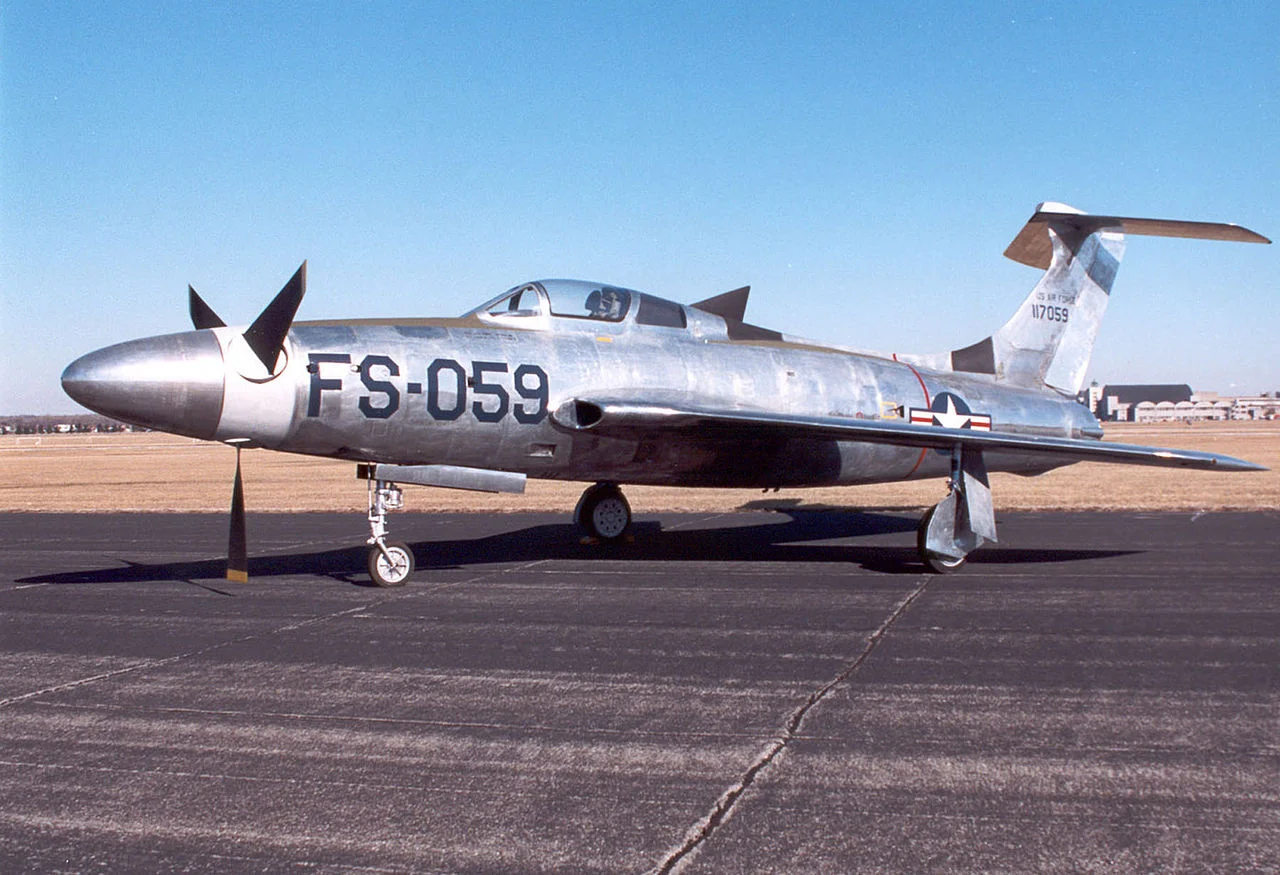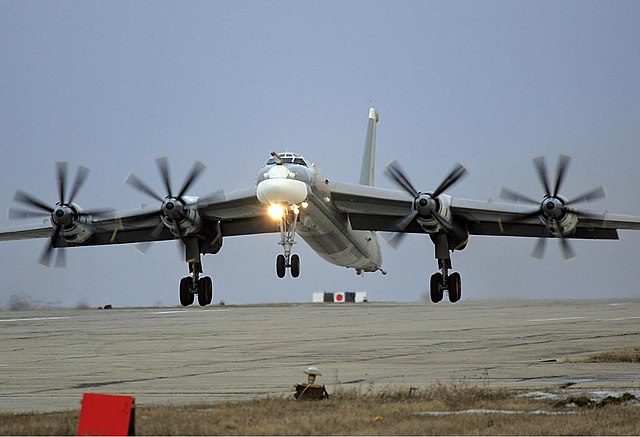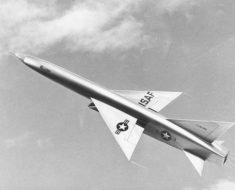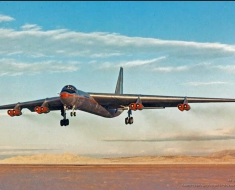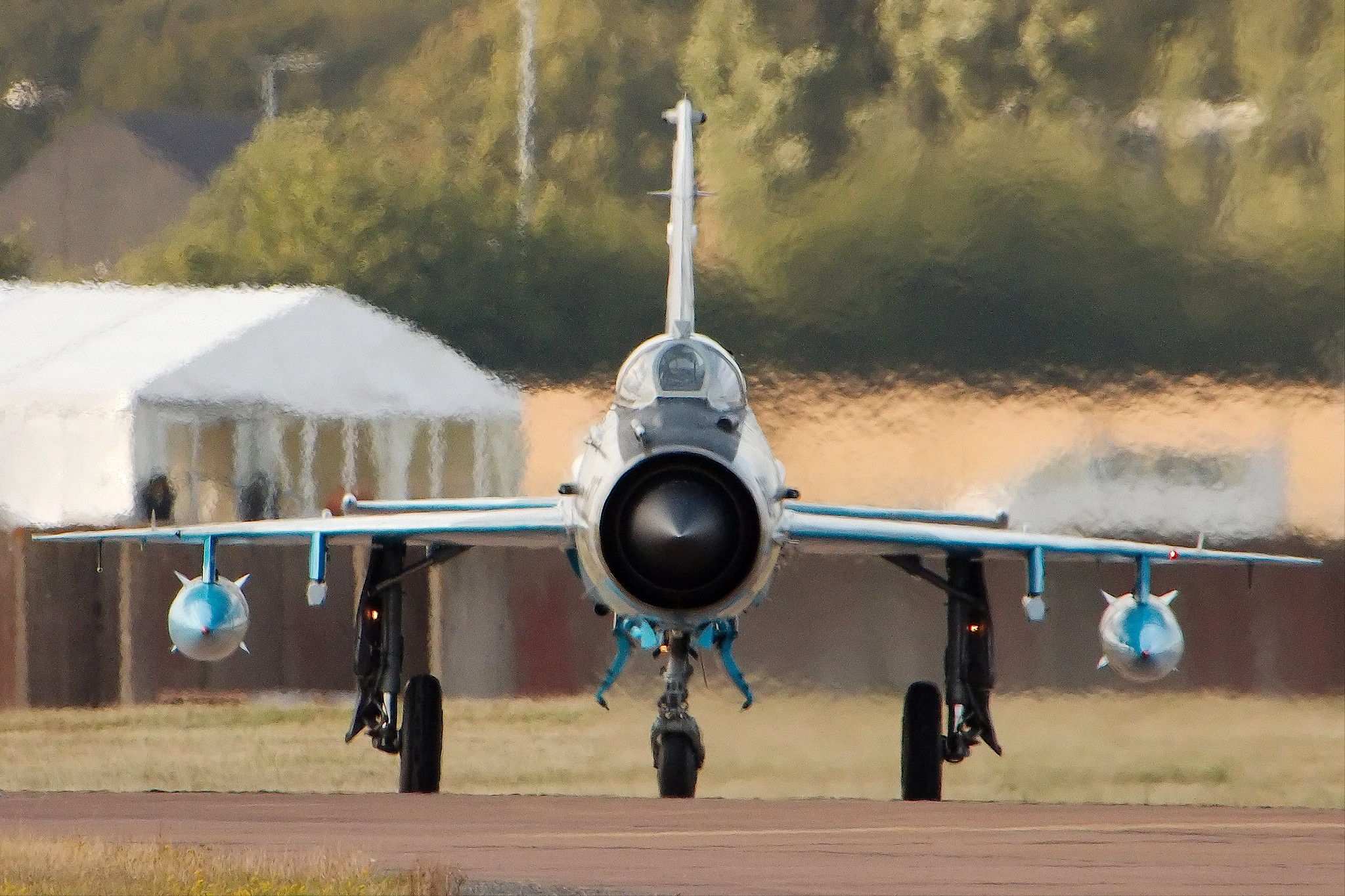The Republic XF-84H is probably the most disliked aircraft the United States has ever put in the air. It was a product of the 1950s; an era where if it had wings and was dangerous, the US would test it.
This aircraft however, was too much for even the most daring test pilots. It was based on the F-84F Thunderstreak fighter bomber, and has the unenviable record as the loudest aircraft in history, earning it the nickname “Thunderscreech”.
Contents
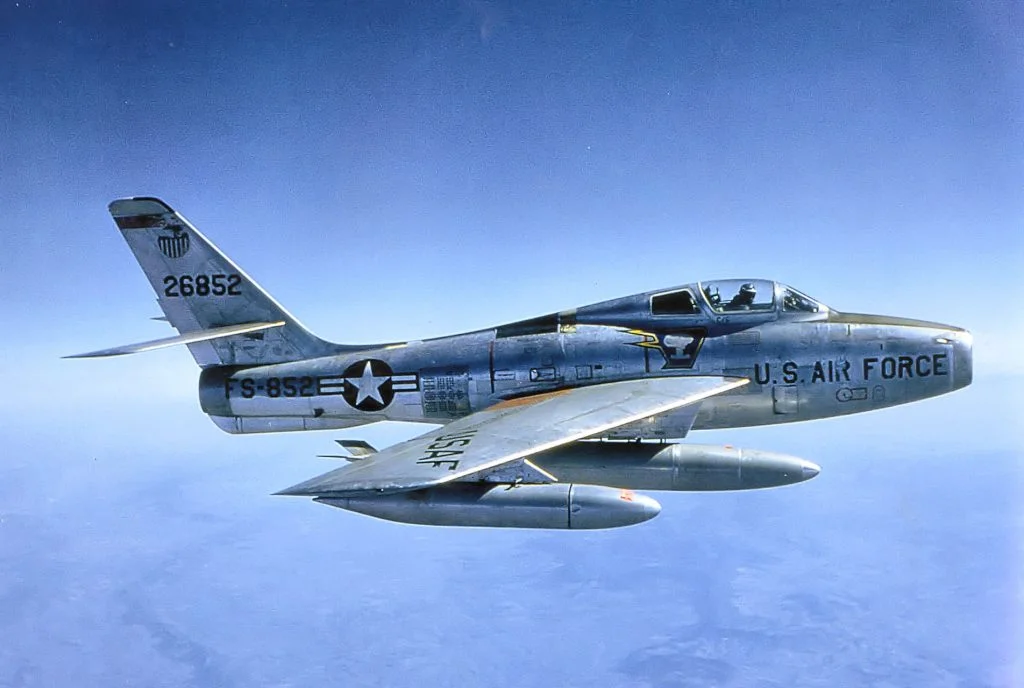
Creation of the XF-84H
Like many other strange airborne concepts, this aircraft began in the 1950s. It was the ‘jet age’ and the new-fangled jet engine was being rammed into just about everything.
Jet engines considerably improved the top speed an aircraft can reach. Without a physical propeller to turn, the sky was quite literally the limit in terms of speed.
Even so, while its easy today to assume the jet engine replaced piston-power overnight, this was not the case, as the trusty old propeller still had a major advantage over jet engines.
Acceleration.
Early turbojet fighters suffered with poor acceleration. This could cause pilots trouble on landing, which is essentially a tightrope balance of slowing down to enough to land without falling out of the sky.
If a pilot needed to suddenly increase speed while coming into land, you could make a cup of tea before the engine would respond. Take-offs were harder too, as slower acceleration needs a longer runway.

In contrast, a propeller provides an almost immediate response.
The XF-84H was created as an attempt to combine the best of both worlds; high speed, and fast acceleration.
The engine chosen was the Allison T40 turboprop engine, which was comprised of two T38 turboprop engines mounted side-by-side. The two engines met at a common gearbox that rotated the propeller. In total, the output of the T40 was 5,850 hp, making it one of the most powerful engines in the world at the time.
The XF-84H’s Noise
Only two XF-84H’s were built.
Both aircraft were sent to Edwards Air Force Base (Edwards AFB) for testing. During the tests, many issues were observed.
Aircraft speed was controlled by rotating the propeller blades themselves, as the XF-84H’s propeller rotated at a constant speed.
Unfortunately, the constant speed the propeller turned at was supersonic.
Another one from us: Nord 1500 Griffon – French Madness?
The blades span so quick, that the outer 60 cm of the blades were travelling faster than sound at about 900 mph. As the propeller’s speed didn’t change, this meant a sonic shock wave continuously emanated out laterally from the propeller for hundreds of metres.

Reportedly, this deafening noise could be heard over 25 miles away. It was so loud, it could physically knock a man down if he walked through the shock waves.
In once instance, a test run of the XF-84H’s engine took place while a serviceman, unbeknownst to the test crew, was inside a nearby C-47. It was discovered after the 30 minute test he had been severely incapacitated by the noise.
Another report states that a Republic engineer experienced a seizure after exposure to the XF-84H. It was also said that ground crews would become nauseous just from being near it.
Personnel at Edwards AFB had to communicate with visual signals during tests. The control tower’s sensitive instruments were also put at risk by the savage, unrelating noise. Eventually, the airbase became so tired of the XF-84H, they made Republic tow it out to Rogers Dry Lake for future tests.

The actual decibels reached by the aircraft were never measured (probably because everyone wanted this thing gone as quick as possible). Looking at the effects it had on the personnel in the vicinity of the XF-84H, it is likely to be the loudest aircraft in history – only beaten by rocket powered machines like the X-15.
Performance
The noise could be slightly forgiven if it proved to be an excellent aircraft in the skies, but even in flight it was terrible.
The XF-84H did have incredible acceleration, but that was about it.
Its problems, like the noise, originated from the engine and propeller system.
The T40 engine proved to be a mechanical nightmare. Each engine had an 18 ft shaft to the gearbox. These shafts would vibrate aggressively at certain speeds, and the mechanism that controlled the stubby propeller’s pitch was prone to failure.
The rotating propeller was so powerful that the aircraft’s handling was severely affected. The powerful torque caused the aircraft to want to spin around the propeller, like a helicopter without a tail rotor. This made the aircraft a pig to fly for the test pilots who had to constantly compensate for this.

Two Republic test pilots flew the aircraft, with a total of only 12 flights. One pilot, Lin Hendrix, flew it once and vowed to never fly it again. The second pilot, Hank Beaird, flew it for the remaining 11 flights. 10 of these required premature or emergency landings.
Republic generously estimated the aircraft could reach over 650 mph, which would have made it the fastest propeller aircraft in history. But, once over 450 mph, the vibrations in the XF-84H would reach dangerous amounts.
Why the XF-84H Thunderscreech was such a terrible plane?
Despite setting an unofficial speed record for propeller planes, the XF-84H Thunderscreech was terrible. This is because of all of its malfunctions. To begin with, this aircraft produced so much torque from its propeller that it would destabilize the aircraft.
In fact, Republic Aviation created this aircraft with a supersonic propeller but was unable to fix the aerodynamic issue. Additionally, the plane had engine reliability issues.
Legacy
The XF-84H flew for less than 10 hours, but has so many extreme reports, statistics and records.
Of the two models built, only one survives after being a gate guardian for decades. It was restored in the 1990s and is now displayed at the National Museum of the United States Air Force.
The aircraft was awful in almost every single way, but it did provide useful research.
It featured the first ram air turbine. This emergency turbine deployed into the oncoming air after engine failure to maintain power for vital on board systems. Unsurprisingly, the XF-84H’s turbine was used more than a pilot would like.

Ram air turbines are used on almost every aircraft today, proving invaluable in potentially disastrous situations.
It also featured air brakes near the end of the fuselage that would be found in the same place on a later Republic aircraft, the F-105.
If its issues were resolved, the aircraft would have most likely been the fastest propeller driven aircraft even to this day. Instead, it’s remembered for being the loudest aircraft in history, and for irritating an entire airbase.
If you like this article, then please follow us on Facebook and Instagram
Another Article From Us: Nord 1500 Griffon – French Madness?
Specifications
Crew: 1
Length: 51 ft 5 in (15.67 m)
Wingspan: 33 ft 5 in (10.18 m)
Height: 15 ft 4 in (4.67 m)
Empty weight: 17,892 lb (8,115 kg)
Gross weight: 27,046 lb (12,267 kg)
Powerplant: 1 × Allison XT40-A-1 turboprop, 5,850 hp
Maximum speed: 520 mph (837 km/h)
Range: 2,000 mi (3,200 km, 1,700 nmi)
Service ceiling: 40,000 ft (12,192 m)
Rate of climb: 5,000 ft/min (25 m/s)

